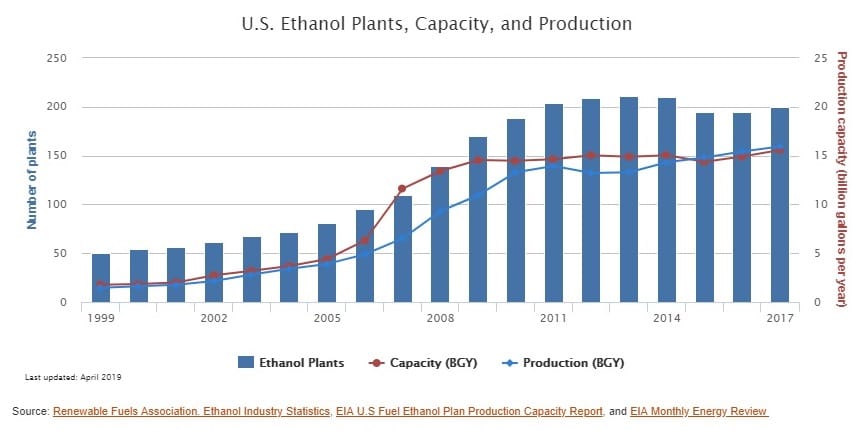U.S. EPA Removes Restrictions on Year-Round Use of Higher-Ethanol Fuels

The U.S. Environmental Protection Agency finalized regulatory changes allowing the sales of E15 gasoline, a fuel blend of gasoline and 15 percent ethanol, during summer months, according to a May 31 news release. The move expands the waivers for “Reid vapor pressure,” a measure of gasoline volatility, which currently applies to E10 blends to E15 gasoline as well. Until now, the sale of E15 has been restricted during summer months due to concerns of smog formation from evaporative emissions.
The measure comes as a boon for corn growers as it will expand the sale of corn ethanol. The American Petroleum Institute criticized the rule, saying that higher ethanol levels could ultimately harm consumers and their vehicles. The trade group urged EPA to fix the outdated renewable fuel standard, or RFS, which was premised on the “faulty assumptions of ever-increasing gasoline demand and reliance on foreign sources of oil, and the near-term commercial availability of advanced and cellulosic biofuels.”
EPA also approved reforms to increase transparency in the market for biofuel credits called Renewable Identification Numbers, or RINs, which are used to demonstrate compliance with the renewable fuel standard. The changes include public disclosure requirements if a party’s RIN holdings exceed certain thresholds and better information collection for enhanced monitoring. The agency expects these reforms to inform actions that ensure market stability.
Starting in 2010, E10 is sold in all 50 states, in order to boost octane, meet air quality requirements, or satisfy RFS obligations. The U.S. is the world’s top ethanol producer, by volume, according to the Energy Information Administration. Since 2014, production has risen, thanks to large U.S. corn harvests and stable corn prices.
EnerKnol Pulses like this one are powered by the EnerKnol Platform—the first comprehensive database for real-time energy policy tracking. Sign up for a free trial below for access to key regulatory data and deep industry insights across the energy spectrum.
ACCESS FREE TRIAL